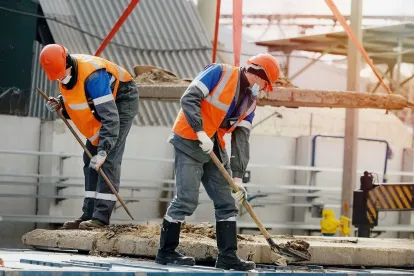The Occupational Safety and Health Administration (OSHA) is moving forward with plans to update its standards to “clarify the requirements for the fit” of personal protective equipment (PPE) that must be provided to construction workers. On September 7, 2022, OSHA issued a notice of proposed rulemaking (NPRM) to the Office of Information and Regulatory Affairs (OIRA)—a final step before publishing the proposed rule for comment.
Although OSHA has not yet published the proposed rule, employers in the construction industry should continue to monitor this critical regulatory development. Its impact could be broad and some say it is either overdue or not necessary.
Under 29 CFR 1926.28, OSHA currently holds employers in construction industries “responsible for requiring the wearing of appropriate personal protective equipment in all operations where there is an exposure to hazardous conditions or where this part [other specific construction standards] indicates the need for using such equipment to reduce the hazards to the employees.”
The standard addressing the criteria for PPE, 29 CFR 1926.95, requires that PPE “be provided, used, and maintained in a sanitary and reliable condition where it is necessary by reason of hazards of processes or environment, chemical hazards, radiological hazards, or mechanical irritants encountered in a manner capable of causing injury or impairment in the function of any part of the body through absorption, inhalation or physical contact.” Part 1926.95(c) also requires that PPE “shall be of safe design and construction for the work to be performed.”
OSHA continues to address PPE standards for head, hearing, eye and face, and respiratory protection, among others. However, OSHA only discusses “fit” requirements for hearing, eye and face protection.
In addition to listing fit requirements for hearing, eye, and face protection, the language in the standards may have led employers to presume that fit requirements are already addressed for all forms of PPE. The requirement of proper fit seems to be implied by words like “appropriate,” “exposure,” “sanitary,” and “reliable,” and by referencing hazards that are “capable of causing injury or impairment.” It also seems that any PPE that does not fit the wearer would likely violate these requirements and these standards.
In contrast, PPE standards for general industry broadly address fit for all PPE. After assessing workplace hazards and determining PPE is needed, 29 CFR 1910.132(d) expressly requires the employer to “[s]elect PPE that properly fits each affected employee.”
OSHA has issued no known interpretation letters regarding PPE fit in the construction industry. Nor are there any decisions by the U.S. Occupational Safety and Health Review Commission (OSHRC) addressing the issue.
OSHA has a specific web page addressing PPE fit in construction as an issue facing many women in the industry. The agency points out that PPE “used by women workers should be based upon female anthropometric (body measurement) data” and that “PPE must fit properly so that it can effectively protect the employee from the hazard for which it was designed.”
OSHA also acknowledges that many employers now provide a full range of PPE sizes and that “there has been tremendous progress in the availability of PPE for women.” There are now more options than one-size-fits-all, including PPE tailored specifically for the female form with details such as:
-
Narrower shoulders
-
Tapered waists
-
Wider hips or side slits
-
Higher zippers/closures
Key Takeaways
OSHA will issue a proposed rule once it clears the internal regulatory review by OIRA. At that time, the agency will explain the basis for its belief that a rule change or update is necessary. It is possible the proposed rule simply modifies the construction standards to more closely resemble the general industry standards. But, it is also possible OSHA attempts to issue a more robust standard that would have requirements beyond a general requirement of “fit.”
Even without a change in the PPE standards, construction industry employers should still consider fit to be part of the current standard or at least part of their requirements under the Occupational Safety and Health (OSH) Act’s general duty clause. Either way, properly fitting PPE—especially for female workers—is an issue construction industry employers may want to consider if they have not done so already.






 />i
/>i

